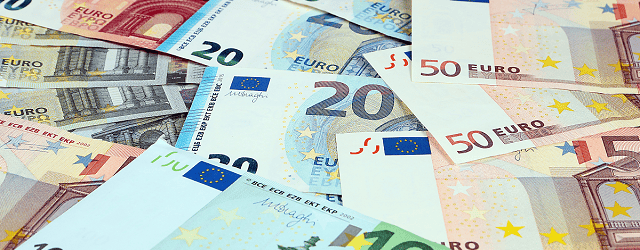When investors become less willing to take risks, they’ve traditionally turned to the dollar and gold as safe havens.

When the US dollar broke into a sudden slide this summer, the euro was the prime beneficiary. The single EU currency rose to a two-year high on August 18 of $1.2; many emerging-market currencies rebounded from earlier selloffs as well.
Analysts, however, said the dollar’s pullback was likely a consolidation of past gains and not a lasting turn downward.
“It was a head fake, and the greenback [dollar] quickly returned to previous ranges,” says Marc Chandler, chief market strategist at Bannockburn Global Forex. The dollar recovered in late August as investor enthusiasm for risk ebbed on dampened expectations of new Federal Reserve initiatives and disappointing preliminary reports on US economic performance in August, he says.
When investors become less willing to take risks, they’ve traditionally turned to the dollar and gold as safe havens. The breakdown of the capital markets in March saw the dollar soar, but as risk appetites returned following massive stimulus from the Fed, investors gradually abandoned it.
The dollar’s losses against the euro accelerated in July as Europe showed itself more successful at controlling the spread of the Covid-19 outbreak and the EU’s 27 member states reached an historic agreement to create a €750 billion ($893.8 billion) pandemic recovery fund. The European Commission will begin large-scale borrowing for the first time and distribute €390 billion of proceeds to member states as grants that do not have to be repaid.
Deutsche Bank strategists forecast that the euro could trade in a fairly wide range this fall, from as high as $1.25 to as low as $1.10, and end the year around $1.20. Further policy changes by the European Central Bank are not expected, they noted in recent analyses, while the euro’s strength will moderate. A continued decline in the dollar could hurt the stumbling recoveries in Europe and Japan as their exports would be less competitive.
The dollar’s pullback this summer helped emerging market economies by making it easier for them to repay dollar-denominated obligations. A weaker dollar also helps lift commodity prices, says Chandler. The dollar’s decline should not be seen as a crisis or a challenge to the greenback’s role in the world economy, he adds; the euro is currently trading close to the $1.20 level it has averaged since it was introduced in January 1999 at $1.17.
However, analysts at Citi say market volatility is likely to increase as US elections near. They remain bullish on the euro and forecast further long-term investment flows into the eurozone, since many global investors are still underweight European assets.



